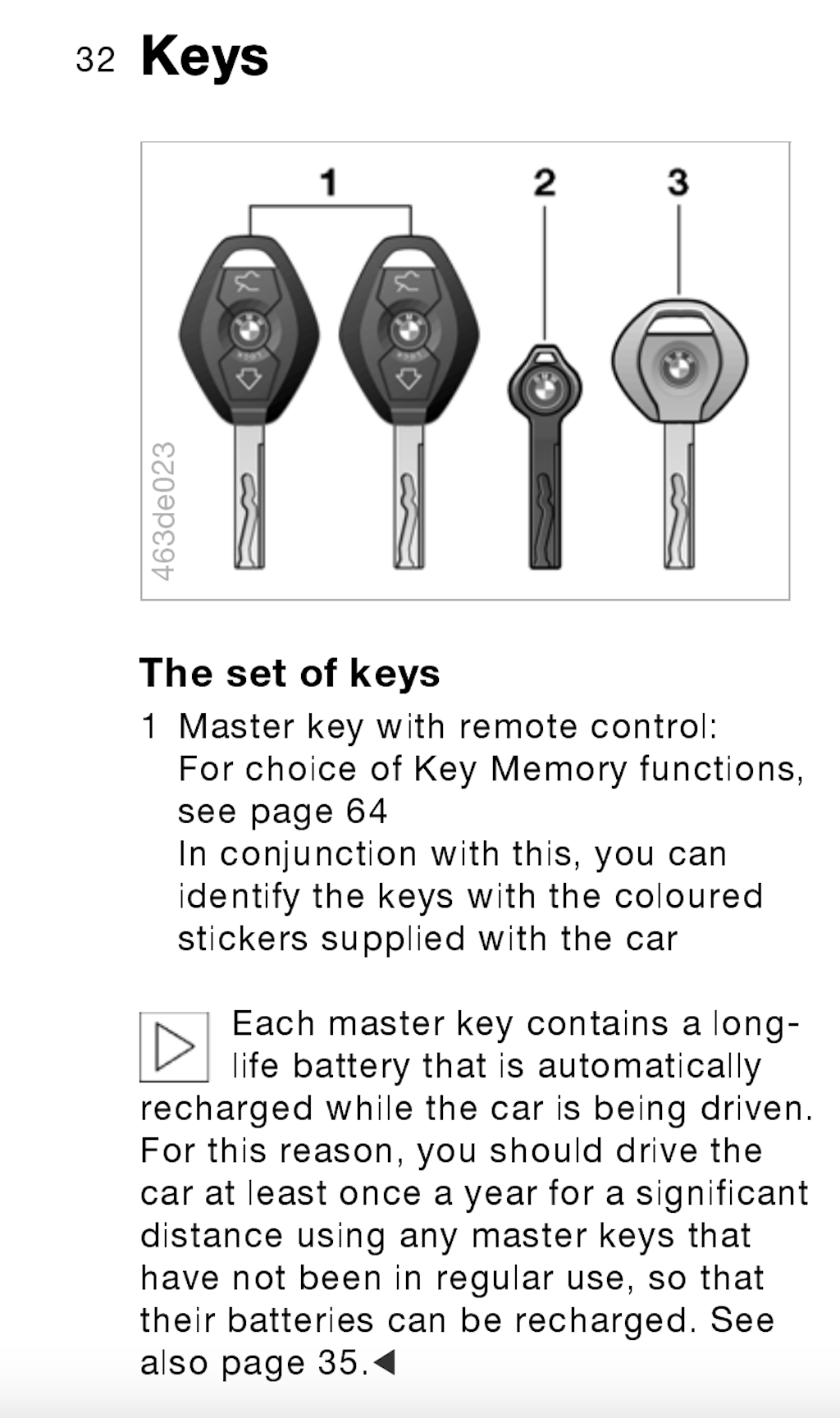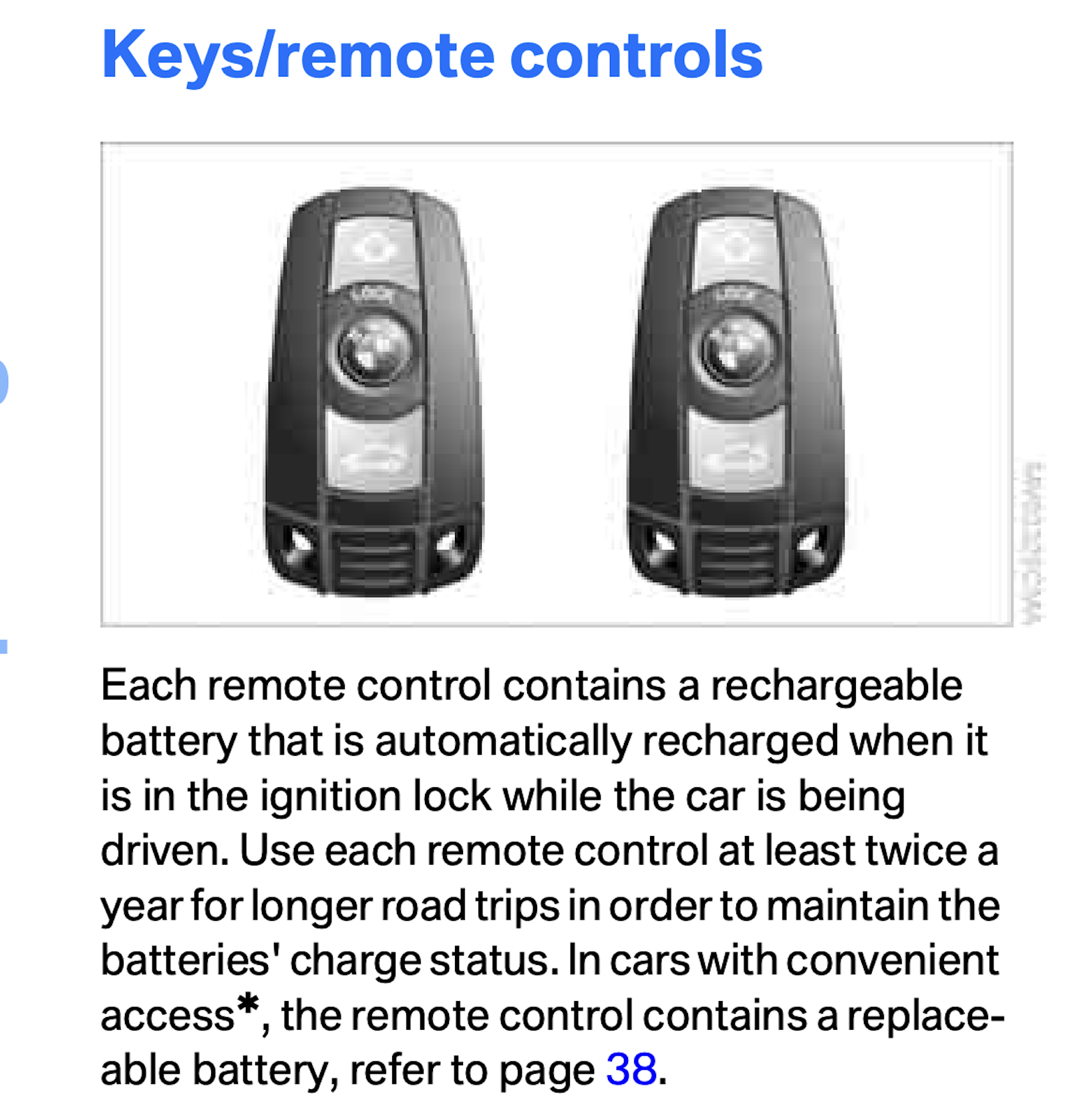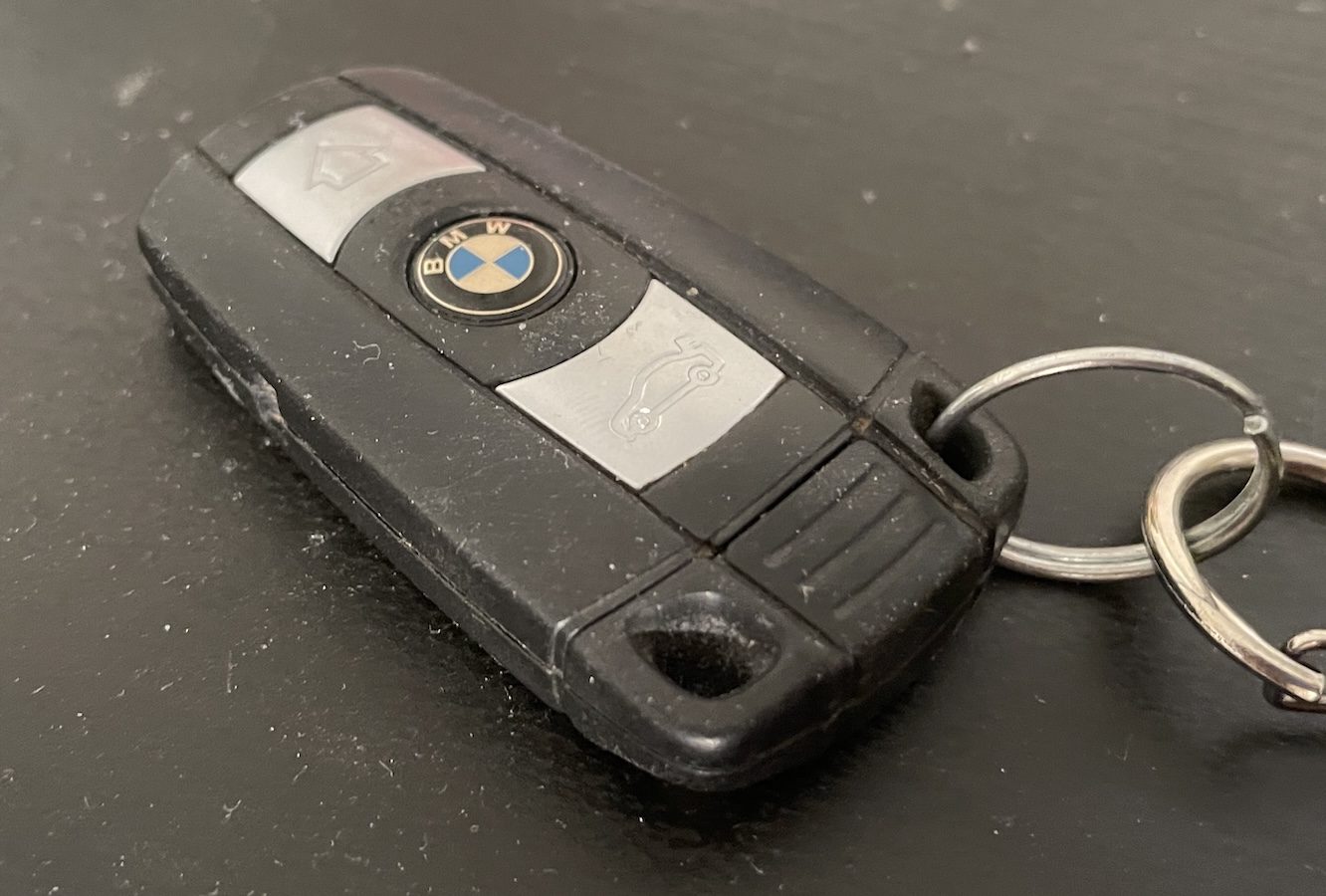In all the years I’ve been road testing cars, I have come to admit that proximity keys are kind of nice. There’s something easy about never having to fish around in your pocket for a key that’s somehow buried itself beneath your wallet and garage door opener, and when you spend time with multiple different key fobs, proximity entry means no hitting the wrong button in the dark. However, beyond potential security issues with some setups, most proximity key fob applications do come with one big downside.
Replacing a key fob battery is a bit of a pain. Not only do dead button batteries mean you have to mess about with a tiny key blade, cracking open a key fob feels like surgery. One wrong move, and suddenly you’ve broken the aged, brittle clips that hold the two halves of the key fob shell together. Also, certain styles of key fob use battery holders that are easily sheared off the board if you have appendages made of ham. Plus, a good button battery is a couple of bucks these days, and that’s just an unexpected nickel-and-dime expense every couple of years.
You’d think by now that we’d have solved the issue of key fob batteries running low. It turns out, BMW did ages ago, but the advent of proximity keys basically killed that feature off. However, hope might not be lost. The digital, connected era means you might already have a rechargeable key fob for your car without even knowing it.

Starting in the 1990s, BMW rolled out a diamond-shaped key with a serious party trick: inductive charging. Yep, the same technology you use to recharge your smart watch. Simply slot the key into the ignition, turn the car on, and inductive charging would juice up the key fob battery on a long enough run, meaning that theoretically, you’d never have to replace a key battery again, so long as you followed the instructions, rotated out both key fobs, and went on periodic longer drives.

When the 2000s rolled around and RFID immobilizer-based contact push-to-start technology rendered physical key blades unnecessary, BMW kept the inductive charging on its base line of fobs. Basically, you’d slide the plastic key fob into a slot in the dashboard, then push a start button to fire up the car. Once in the slot, inductive charging would give the key fob a helping hand so it can theoretically stay charged up.

By the mid-2000s, however, proximity keys were making their way into the mainstream, featuring rolling radio codes and touch pads on door handles that meant you’d never have to remove the fob from your pocket. Obviously, people weren’t sliding these keys into the dashboard, so BMW went with a replaceable button battery once again. That’s a couple bucks every few years, and some hassle to install a new cell.

Of course, going back to button batteries solved an often user-induced issue with rechargeable keys. BMW’s inductive charging keys were sealed, meaning that if the batteries were allowed to run flat, the only way to fix it involved slicing open the fob and desoldering the battery inside to replace it. While some early fobs used according to BMW’s instructions are still functioning nearly 30 years later, some aren’t.
Still, even when proximity keys started to dominate, BMW didn’t give up on rechargeable keys entirely. Remember that hilariously hefty Display Key from the 2010s with its own built-in touchscreen? Yep, in addition to USB charging, it could also charge inductively when set in the car’s wireless phone charger. Probably best that it stayed out of your pocket while driving, considering this monster fob’s about the size of a hamster. That could get uncomfortable on long road trips.

Flash forward to the present day, and the latest sensation is phone-as-key technology, now offered by a huge range of manufacturers from Tesla to Hyundai. Using either Bluetooth Low Energy or Near Field Communication, owners of some modern cars can lock, unlock, and start their vehicles using their phones. Think of it a bit like Apple Wallet or Google Wallet, but for your car. Plus, since your smartphone doesn’t run on button batteries, it means you might already have a rechargeable key fob for your modern car. In some ways, what’s old is new again, although it is quite neat that BMW pretty much solved this common aggravation nearly 30 years ago.
Top graphic images: Thomas Hundal; BMW









The rechargeable keyfob battery in BMW keyfobs deserves it’s own dedicated hell which I’m confident is awaiting.
Only someone who has not had to deal with one can say anything positive about them with a straight face.
Also, only the cars without Comfort Access have them. The ones that require the fob to go in the slot. The Comfort Access ones are regular replaceable ones.
The batteries eventually fail. For a very long time, they were not sold separately- just with a new fob around them. Given that they are soldered on the circuit.
They are BMW-specific. They are a variation of a commercially available battery (VL2020), but have the solder legs at 90 degrees rather than at 180.
To this day, they are gray imports. No serious distributor has them. Even Mouser only has standard VL2020s, not the BMW keyfob ones.
The first batches of batteries that appeared on Chinese sites with the correct pins/legs orientation seemed to be old stocks, as they overwhelmingly didn’t hold charge and came precharged at 2.5v rather than 3v. An E60/E61 keyfob will not emit any signals below 2.95v.
Fresher batches seem to be available now, at prices above $15.
So once the remote in your keyfob dies (the ignition is a separate circuit that is not battery dependent, so the car will still start) you have to check if you have a signal going out at all. Which would be easy as remotes have LEDs that blink when they emit a signal, right ? Yeah, about that… nope.
Then, you’ll have to try and charge it. Because it could be the coil in your keyfob slot that is dead, not the battery. So you’ll try every electric toothbrush charger known to man.
Then you’ll crack open the keyfob to measure the voltage at the solder pins. Then order the battery. After a few orders, you’ll buy a keyfob signal tester for 20 bucks, because sanity matters, then will test the keyfob with 3v constant fed at the pins. Then order more batteries. Find one that works.
Desolder old one. Solder new one. Test. Hear that confirmation beep at the tester. Wipe tears of pride and joy.
Test keyfob. Realize that the diversity antenna has croaked as well. Replace. Realize the wire loom at the trunk lid is cut as well. Fix.
Enjoy your working keyfob. Then rinse repeat with the second keyfob that was a spare and never used, so – left to discharge and dies.
Anyone remember the keys that had the built in lights? They pre-dated keyfobs altogether. I had a couple of 30’s that had them. You press the button on the key and it lights up so you can see the keyhole.
The big problem with replacement batteries (pretty much all of them) is they never last as long as the original ones. I mean I have had button batteries last for years, and when they finally die I replace them and the replacement lasts for months at best.
Could be more an issue of the fob having a short/using more power then which is what really caused the battery to die originally. I’m still using the original battery in my 2006 (non-proximity) fob…
This really never should have gone away.
The first time I drove a car with a proximity key, it took me about 10 minutes to figure out how to start the damn thing.
My ’98 BMW has the inductive charging key, and it still works! It’s probably the only original part that still does!
“The first time I drove a car with a proximity key, it took me about 10 minutes to figure out how to start the damn thing.”
And how did that make you feel Bob?
BMW has always been pretty innovative with keys. I love how many options we have to use our 330e. It has 2 traditional fobs, but we can also use our phones as keys, or it also came with a proximity wallet card that doesn’t ever need a battery. I usually use the standard key fob, but its so nice to just use my phone and not have to run back into the house for keys if I’m outside and decide to run an errand or something. It’s a feature I use at least a couple times a week. The only downside is that I have to remember to lock the doors by tapping my phone on the door handle when I get out of the car… where the fob will automatically lock them when I walk away.
I lost my Mercedes’ “keyless go” fob…unfortunately they had a really bad era of the batteries failing in a matter of weeks not months. So apparently their answer was just to discontinue the supply of keyless go fobs for older applications. Thanks…
FWIW a batteryless key fob still works to turn the car on. In Mercs it uses induction energy (same as the recharge of the key above) to excite an IR transmitter and RFID in the fob itself. So even if your fob battery is dead, you still use the key as normal to start the car. Of course like most cars there is also a physical key for the door locks.
BMW discontinued their older key/fobs (shown above on the pic with 32 on it, used in early 2000s cars) this year. Now if you lose your key you can only get a manual one to replace it. Side note, all keys are made in Germany and you have to have one shipped. They can only program 10 total keys for your car before you have to replace the EWS system so a new batch of 10 can be made for the car. You get 4 keys with the car, so that means you’re capped at 6 more keys before the car is essentially bricked – for the vast majority of cars still left with this systems a EWS replacement is more than the car is worth.
I have 2 BMWs that use that key.
Every proximity key car I’ve had from several manufacturers has had an “emergency space” to set the key so you could drive with a dead fob battery.
And I noticed on my annual service from Mercedes-Benz that one of the included items is “change key fob battery”. Now I need to remember to bring both key fobs next time!
Annual!? LOL my w212 key fob battery lasts like 6 weeks, common problem unfortunately. Luckily harbor freight sells the button batteries super cheap. Pretty wasteful though.
Are the keys kept close to the car? If so, I wonder if they might keep communicating.
I don’t mind the battery replacement on the proximity keys, but I do mind it when super soft plastic is used in the notch designed for separating the fob. I hate prying them open only to have the plastic all deformed on the exterior edge of the fob.
We’d purchased a new car a few years back, I didn’t have a choice on key style as they’re all proximity keys these days (despite the fact that I’m not a fan of them) – with the number of times that the keys have been forgotten in the car when we first got it: I’m surprised ‘easy’ car thefts aren’t far more common.
I think the 2nd Gen Prius also had you insert the fob into the dash, it was kind of nice.
Some of the early Nissan/Infiniti pushbutton start systems had a dash spot too, if just as a spot to turn it on when the fob battery was dead.
My favorite feature that I never use due to proximity keys is the all windows up/down by holding the lock/unlock buttons. My car will roll them all up and close the sunroof if you lock the car by touching the door handle and continue touching it till they’re all closed, but I can’t make them all roll down without finding my fob.
My wife uses the roll down feature in the summer regularly and loves it. She just uses my proximity key which is always stored in its little cubby in the house instead of fishing her key out of her purse. It turns out having me around is good for something.